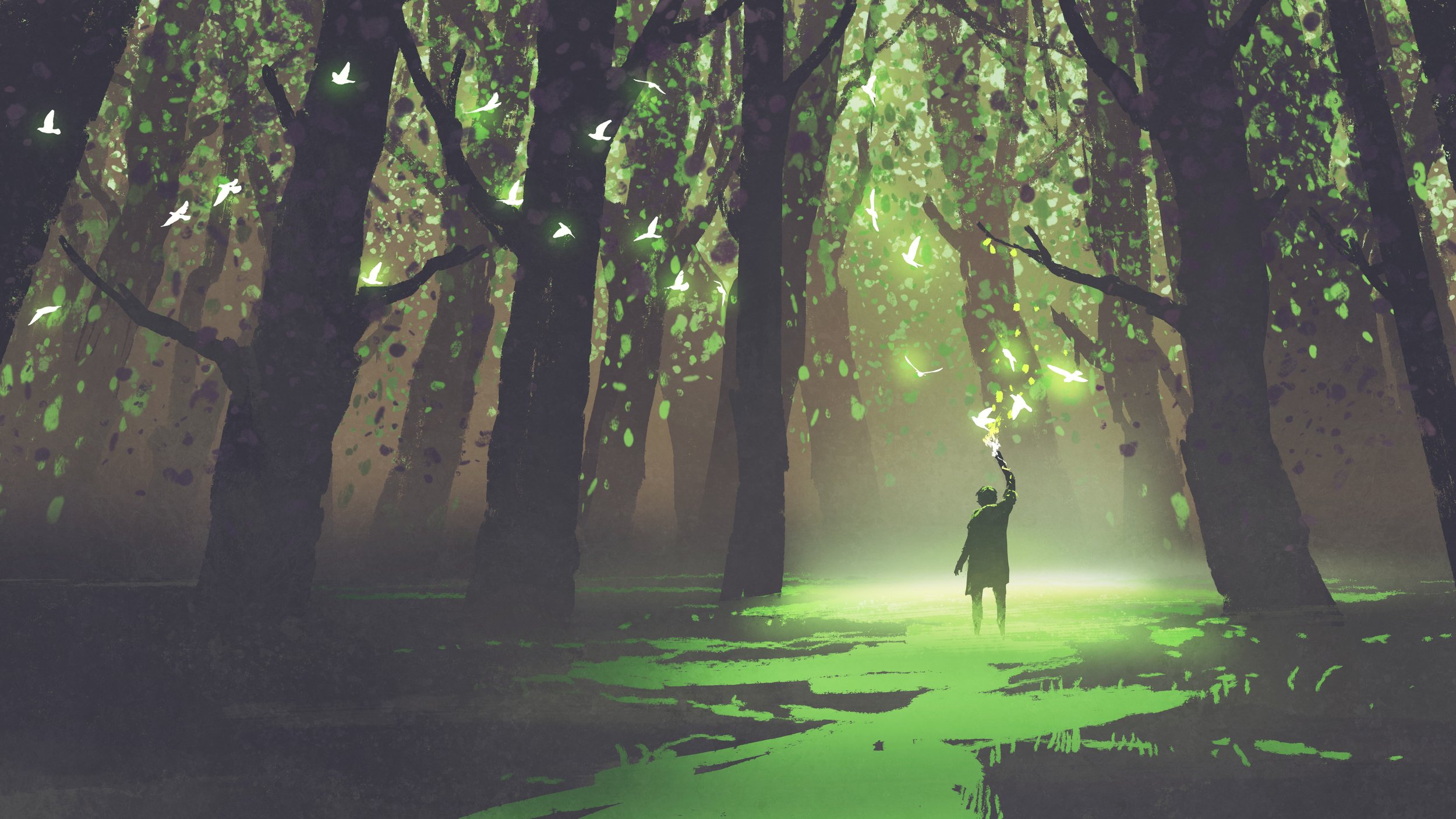The Changing Role of Mental Health in Marvel’s Moon Knight
Mental health has often been a part of Moon Knight’s story, but how it has been written and used in his character has evolved over time.
This article includes affiliate links. If you purchase through an affiliate link, I earn a small amount from qualifying purchases.
I’ve struggled with mental illness–specifically, anxiety and depression–for most of my life. One of the ways I was able to reckon with my own mental health issues was through media; I watched characters that I loved go through similar hardships, and it helped me identify things I needed to work on in my personal life. While modern media has made great strides in its depiction of people dealing with mental illness, there’s a long, ugly history of negative or insensitive portrayals of conditions like depression, schizophrenia, and dissociative identity disorder.
The latter disorder has a particularly interesting history in the realm of comic books. Several prominent comic book characters have struggled with “multiple personalities” over the years: Batman’s villain Two-Face, Alpha Flight’s Aurora, and the X-Men’s Legion are all examples of important characters who have been diagnosed with dissociative identity disorder (or DID) at some point in their comic book history.
“I am Moon Knight. The bearer of the mantle of Khonshu. Khonshu the justice bringer. I am vengeance.”
—Marc Spector, Moon Knight Vol 1 23, “Perchance to Scream”
Unfortunately, characters with DID were often used as villains. Two-Face is the most notable example, but Legion was also introduced as a threat in the pages of New Mutants. While Aurora was one of the good guys, her alter was often used to create conflict and drama among her teammates.
Of course, there’s one major exception to this trend: the heroic Moon Knight, whose recent Disney+ show took a long, thoughtful look at the character’s struggles with DID. What viewers may not realize is that Moon Knight’s Dissociative Identity Disorder wasn’t always a part of the character in the comics; even when it was, it was seldom handled as sensitively as the show approached it.
Readers were first introduced to Moon Knight in the pages of Werewolf By Night #32, where he’s an antagonist hunting down the titular werewolf. As is often the way of things in superhero comics, the whole thing turns out to be a misunderstanding, and Moon Knight eventually teams up with Jack Russell (Werewolf By Night’s real name) against the werewolf hunters who hired him.
A few years later, Moon Knight got his own series, where his backstory was revealed: betrayed and left for dead, mercenary Marc Spector made a deal with the Egyptian god Khonshu, becoming the god’s earthly avatar in exchange for another chance at life.
“My brain is Moon-silvered, lunatic, cratered with a god's fingerprints. The deep structures of my mind have been irreversibly changed by communion with an ultraterrestrial intelligence. This is my poisoned ground. This is my temple. But I take my weaknesses and turn them to my advantage. I take my scars... and make of them my weapons.”
- Moon Knight, Moon Knight Vol 9 2 “Strings”
Leaving his old identity behind, Marc instead takes up the persona of Steven Grant, a wealthy philanthropist, while also moonlighting as taxi driver Jake Lockley and masked vigilante Moon Knight. At first, Steven and Jake were simply disguises Marc used to gather information and keep people from learning his identity as Moon Knight–they weren’t alters at all.
The idea of Marc’s potential mental instability is there from the jump, though. No one (including the reader) actually sees Marc interact with Khonshu; we simply see Marc pass out from heat exhaustion and wake up later, attributing his recovery to the moon god. The story leaves it ambiguous as to whether or not there’s a genuine supernatural element at play or Marc was hallucinating due to stress and trauma.
By the time of his second solo series in 1985, things had gotten more complicated. Jake and Steven are explicitly referred to as split personalities, with the implication that Marc doesn’t have full control over them; at the same time, though, Marc is able to ‘give up’ those identities on a whim and be Marc Spector full-time.
The idea seems to be that the Steven Grant and Jake Lockley personalities began as simple disguises, but that Marc ‘became the mask,’ so to speak–he got too invested in each persona and stopped being able to distinguish between the act and reality. That’s not how real Dissociative Identity Disorder works, though.
“I am Marc Spector. I am Steven Grant. I am Jake Lockley. And we are going to be okay. We are going to live with who we are. We are Moon Knight.”
- Moon Knight, Moon Knight Vol 8 14 “Death and Birth: Part 5 of 5”
Later, writer Warren Ellis attempted to rectify this inaccurate portrayal of DID in Moon Knight’s 2014 solo series. After decades of Moon Knight being written off as a “crazy” character, Ellis revealed that Marc never had DID at all; instead, his alters were magical in nature, a result of his bond to Khonshu. Each one represented a phase of the moon.
Ellis was attempting to right a wrong–he thought it was offensive to imply that someone could “catch” Dissociative Identity Disorder by pretending to be other people. But despite his good intent, Ellis’s story had the unfortunate side effect of erasing representation. Marvel didn’t have a lot of heroic characters who explicitly struggled with mental illness; Moon Knight was their most visible character in that regard.
A few years later, Jeff Lemire took a turn at the character. His run established that Marc had, in fact, suffered from DID from an early age–long before becoming Moon Knight. This story, “Welcome to New Egypt,” cleaned up a lot of the character’s history with the condition and also served as inspiration for the recent Moon Knight series on Disney+.
Moon Knight is finally in a position where the character’s intrinsic mental health struggles can be written about with compassion and thoughtfulness, but it took four decades to get there–from the character’s first appearance in 1975 to Lemire’s run in 2016.
“I -- I've been sick my whole life. And I've felt ashamed of that. I tried to hide it. I think that's what the mask really was. Another way to hide. But I don't want to hide anymore. I don't want to be ashamed anymore. I just want to be me.”
- Mr. Knight (Marc Spencer), Moon Knight Vol 8 9 “Incarnations: Part 4 of 4”
It’s upsetting to think about how long it took for Moon Knight’s condition to be treated seriously. For decades, his DID was used to label him as “crazy,” and we as the audience were meant to read “crazy” as “dangerous.” He played into many hurtful stereotypes around mental illness. However, looking at it from another angle, the story of Moon Knight’s publication gives me hope. It’s a reminder that, with proper care, things will get better.
While his early stories are awkward and offensive, it’s important to recognize that later writers have taken pains to correct the mistakes of the past. Over the years, Moon Knight’s Dissociative Identity Disorder has shifted from a story gimmick to a joke to an integral, respected part of the character; the fact that writers like Lemire thought about how to portray the condition in a sensitive light shows that the industry as a whole is improving.
As comics and television shows become more progressive in their portrayals of mental illness, the culture around those stories improves as well. Stigmas are stripped away, and the audience begins to understand and empathize with characters who have had vastly different experiences than their own. When our stories improve, our society improves, and it’s wonderful to think that Moon Knight has contributed to that improvement.
I also see my own mental health journey reflected in Moon Knight’s messy history. I spent a decade of my life denying that I had any kind of mental health issues; even after admitting it to myself, It took me years to get a proper diagnosis and treatment plan that helped me actually understand and manage my condition. My past may not be as complicated as Moon Knight’s–and my struggles are not as extreme–but in a way, his messy, oft-retconned background serves as a parallel for the twisting path many of us take toward better mental health.
Author:
Ethan McIntyre is a writer and podcaster with a deep love of comic books, horror movies, and giant robots. You can find him on his blog, It Came From Off Panel, or on Twitter @offpanelpod, where he discusses nerdy topics like tabletop games and the weird skull bear from the film Annihilation.
Read more on working on comics and personal development: X-Men and the Power of Being True to Yourself and The Divinity and Humanity of Superman, Captain America, and Ourselves













